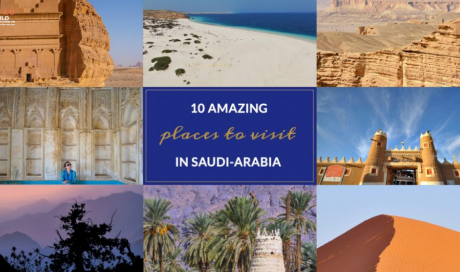In 1925, Holmes signed a contract with the Sheikh of Bahrain, allowing him to search for oil there. He then went to the United States to find an oil company who would be interested in investment. He found help from Gulf Oil.
In 1927, Gulf Oil had taken control of all the contracts that Holmes entered years ago. But being a partner in the Iraq Petroleum Company, which was co-owned by Anglo-Persian, and “the Near East Development Company, Gulf Oil was representing the benefits of the American companies.
The partners had signed up to the “Red Line Agreement” which meant that Gulf Oil was prohibited from taking up the Bahrain contract without the consent of the other partners, and they declined. Despite a valuable survey in Bahrain, Gulf Oil was required to transfer its interest to another company, Standard Oil of California (SOCAL), which was not under the Red Line Agreement.
In the meantime, King Abdul-Aziz had sent off American mining engineer Karl Twitch ell to inspect eastern Arabia. Twitch ell found hopeful signs of oil, asphalt seeps in the surrounding area of Qatif, but suggested the King wait for the result of the Bahrain No.1 well before calling for bids for contractual rights for al-Hasa.
To the American engineers who were working in Bahrain, standing on the Jebel Dukhan and looking across a 32 km stretch of the Persian Gulf at the Arabian Peninsula in the brightness of the early hours of the morning, the sketch of the low Dhahran Hills in the distance was a clear oil view.
On 31 May 1932, the SOCAL subordinate, the Bahrain Petroleum Company (BAPCO) struck oil on Bahrain. The finding brought a new motion to the exploration for oil on the Arabian Peninsula. In March 1933 dialogues for an oil acknowledgment for al-Hasa province opened at Jeddah.

Twitch ell is there with lawyer Lloyd Hamilton on behalf of SOCAL. The Iraq Petroleum Company represented by Stephen Longrigg competed in the bidding but SOCAL has approved the concession on 23 May 1933.
Under the agreement, SOCAL was given “investigation rights to some 930,000-square km of land for 60 years”. Shortly after the contract, geologists arrived in al-Hasa and start finding for oil. SOCAL associated a subordinate company, the California Arabian Standard Oil Company (CASOC) to develop the oil acknowledgment.
SOCAL also joined hands with the Texas Oil Company when together they created CALTEX in 1936 to gain the benefit of the latter’s alarming marketing network in Africa and Asia. When CASOC geologists reviewed the allowance area, they acknowledged a promising place and named it Dammam No. 7, after a close by village.
Over the next three years, the drillers were failed in making a profitable strike, but head geologist Max Steineke kept trying. He insisted the team to drill deeper and deeper. Even many problems came. But finally, Drillers struck oil on 3 March 1938.
This finding would turn out to be first and reveal the largest supply of crude oil in the world. For the King, oil revenues became an important source of wealth since he no longer had to rely on revenue from pilgrimages to Makkah. This discovery would modify Middle Eastern political relations forever.
...[ Continue to next page ]
Share This Post














